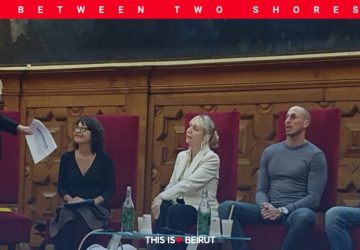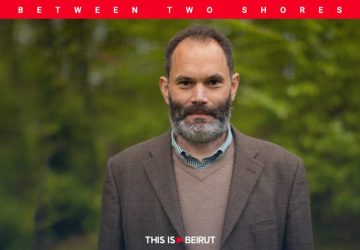Listen to the article
In 1928, Romain Gary, a member of the Resistance and twice laureate of the Goncourt prize, one time under the pseudonym Ajar, settled in Nice with his mother who had promised him the azure sky. In this city, writing takes on a vital dimension for him, and his ties with the Mediterranean solidify. Upon his death, his ashes are scattered there. Promise at Dawn, a fictional autobiography published in 1960, is ultimately a kept promise, albeit somewhat belatedly. Throughout the pages, the maternal figure dominates the narrative space and merges with the city. The places trodden are those of the author’s affective memory as he made Nice his home.
To visit the places where Romain and Nina set foot is, in some way, to put one’s steps in theirs, to leave a trace on the asphalt that would add up to others, to trace back to the interwar period. This is the time when Roman Kacew, alias Romain Gary, born in 1914 in Vilnius, Lithuania, discovers this idyllic France, this “fabulous myth” with which Nina lulled his childhood, and whose education focused on reading classics: the childhood and life of famous French people in history, La Fontaine, and Hugo for literature.
First, he arrives at Nice’s station, of which he retains “the memory of a porter.” Then, he moves into the two-room apartment on Shakespeare Avenue where the teenager learns that his mother is depriving herself of meat to feed him and, upset, he flees: “At the end of Shakespeare Avenue where we lived then, there was an almost vertical embankment overlooking the railway, and that’s where I ran to hide.” Romain Gary recounts with humor the embarrassing situations in which maternal love threw him, a humor which he will not abandon throughout his writings and of which he says: “Humor is a declaration of dignity, an affirmation of man’s superiority over what happens to him.”
Mina, alias Nina, a former Russian actress, has unconditional love and faith in her son. She predicts his future: “You will be Victor Hugo, Nobel Prize!” or “You will be the ambassador of France.” And Gary concludes: “That’s what I would have liked to give her.” Energetic and flamboyant, Nina stands out within a cosmopolitan society where English, Russians, Italians, and French mingle. She goes to Victory Avenue, today Jean Médecin Avenue, to sell old silverware pieces brought back from Russia. It is an unremitting struggle against adversity: “After spending the day walking from house to house, her little suitcase in hand – it was about going to see the rich English in the palaces presenting herself as an impoverished lady of the Russian aristocracy reduced to selling her last family jewels – the jewels were entrusted to her by the shopkeepers and a ten percent commission was reserved for her […].” She ends up getting a corridor showcase at the Negresco hotel, today a gem of luxury hospitality, “where she displayed the items that the luxury stores conceded her […].”
The pair moves shortly after. We are now in front of what was the Mermonts hotel pension, located at 7 Carlone Boulevard, and now Grosso Boulevard at the corner of Dante Street. A commemorative plaque against the wall of the building catches one’s eye: “Here, from 1930 to 1933, lived Romain Gary. Writer, twice winner of the Goncourt prize. Companion of the Liberation.” It is in this apartment that the teenager begins to write, to know the grandiose destiny his mother predicts for him. The author recounts: “It was at this time that my mother made her best deal, the sale of a seven-story building […]. It was entirely by chance that the buyer appeared. […] struck, like so many others before him, by my mother’s enterprising spirit and energy, he entrusted her with the management, accepting on the spot the suggestion to transform part of the building into a hotel restaurant.”
Nina goes to the Buffa market every day to shop: “It was a place of accents, odors, and colors, where noble imprecations rose above the escalopes, cutlets, leeks […]. Every time I return to Nice, I go to the Buffa market. I wander for a long time among the leeks, asparagus, melons, beef pieces, fruits, flowers, and fish. The noises, the voices, the gestures, the smells, and the perfumes have not changed, and there is little missing, almost nothing, for the illusion to be complete.” Today, all that remains is an old abandoned building at the intersection of Gambetta Boulevard, with the blue sign “Buffa Market” and at the very top, the year engraved 1925.
Romain attends the Massena High School, whose prestigious building still hosts boarding students today: “The Nice high school was not the only educational establishment that rose then between Massena Square and the Paillon Esplanade.” On the way back, Romain stopped at the flower market, known today as Cours Saleya: “Thus, on the way back from high school, I was sometimes able to stop at the flower market and buy, for fifty cents, a fragrant bouquet, which I offered to my mother.” Over time, the teenager becomes emancipated and takes initiatives. It is in old Nice that he will sell the unsellable samovar on Victory Avenue: “I had even managed to sell the famous samovar, which I had placed with an antique dealer in old Nice, for undoubtedly a ridiculous sum […].”
Nevertheless, amidst this unceasing struggle, there were joyous days where mother and son would rendezvous by the sea: “Thus, one could see, at that time, around nine in the evening, surveying the crowd of strollers on the Promenade des Anglais, a distinguished lady with white hair and a teenager in a blue blazer, discreetly sitting with their backs against the balustrade […].” Romain Gary ceaselessly extolled the Mediterranean, to which he pays tribute: “Dear Mediterranean! How your Latin wisdom, so gentle in life, was merciful and friendly to me, and with what indulgences your ancient, amused gaze fell upon my adolescent forehead! I always return to your shore, with the boats that bring back the sunset in their nets. I was happy on these pebbles.”
Romain Gary fulfilled his mother’s ambitions by joining the Free French Air Forces and committing himself to General de Gaulle. He fought in Great Britain and Africa against the occupation and attained the rank of captain. As he wrote his novel, he said: “Perhaps it is best to say right away, for the clarity of this narrative, that I am today a Consul General of France, a Companion of the Liberation, an officer of the Legion of Honor, and if I have not become either Ibsen or d’Annunzio, it is not for lack of trying.” Returning to Nice at the end of the war, he discovers that his mother passed away three and a half years before his return: “She had written nearly two hundred and fifty letters, which she had sent to her friend in Switzerland. I was not supposed to know – the letters were to be sent to me regularly […].”
In June 2005, on the twenty-fifth anniversary of Romain Gary’s death, Nice celebrated the writer with exhibitions, screenings, recitals, and theater relating his journey. The Heritage Library of Nice paid tribute to him by adopting the name Romain Gary Library. The director, Myriam Cauvin, guides us on a tour of the premises and specifies that “the heart of its collections comes from the old Episcopal library of 1706. It contains numerous treasures: manuscripts, prints, posters, photographs, maps […]. But Romain Gary’s archives are at the IMEC (Institute for Contemporary Publishing Memory) near Caen.” Adapted in 1970 by Jules Dassin, where Melina Mercouri played the possessive mother, the novel re-emerged in 2017 with the beautiful adaptation by Éric Barbier, in which Charlotte Gainsbourg embodies Nina, and Pierre Niney plays the young Gary.





